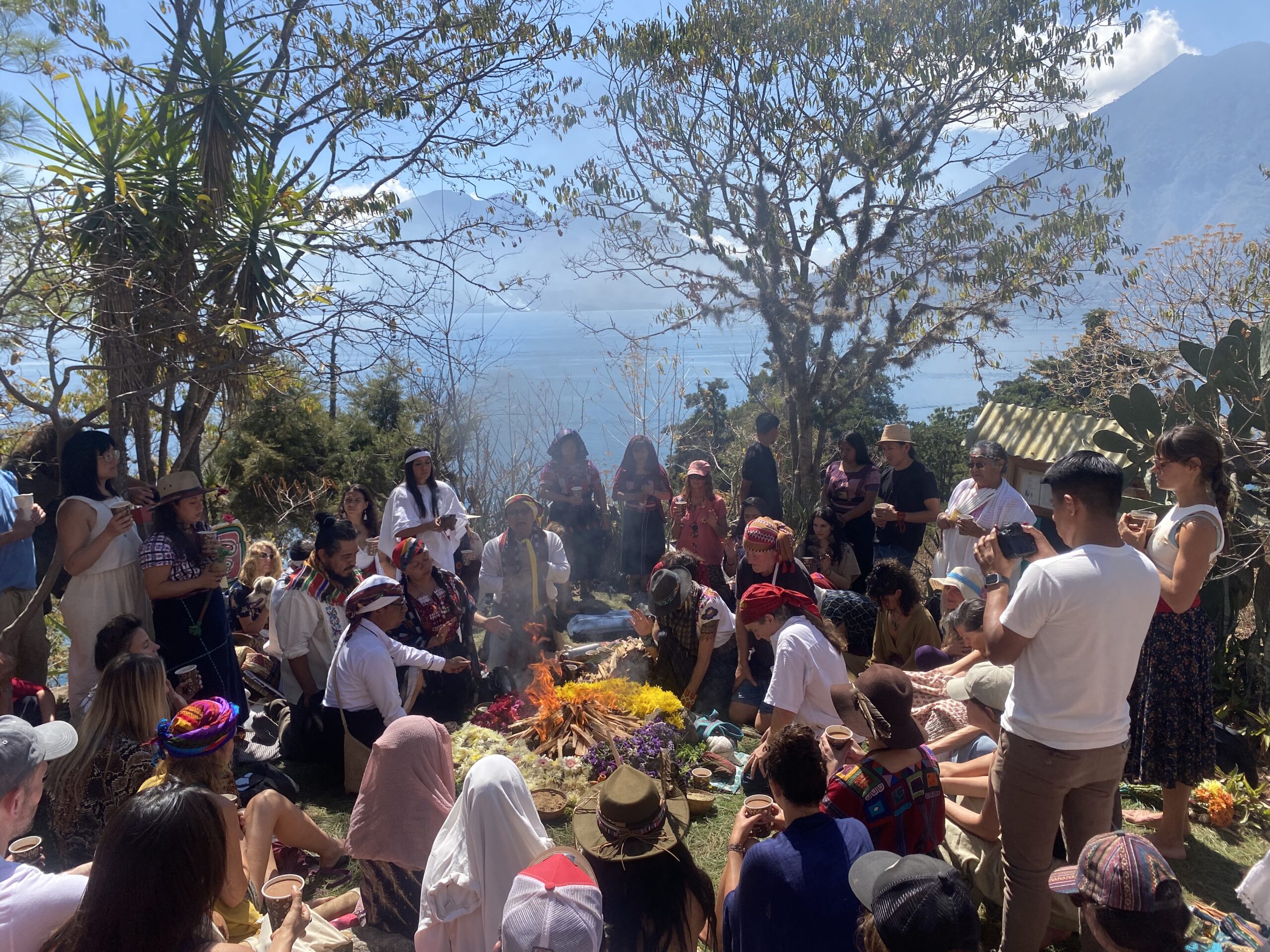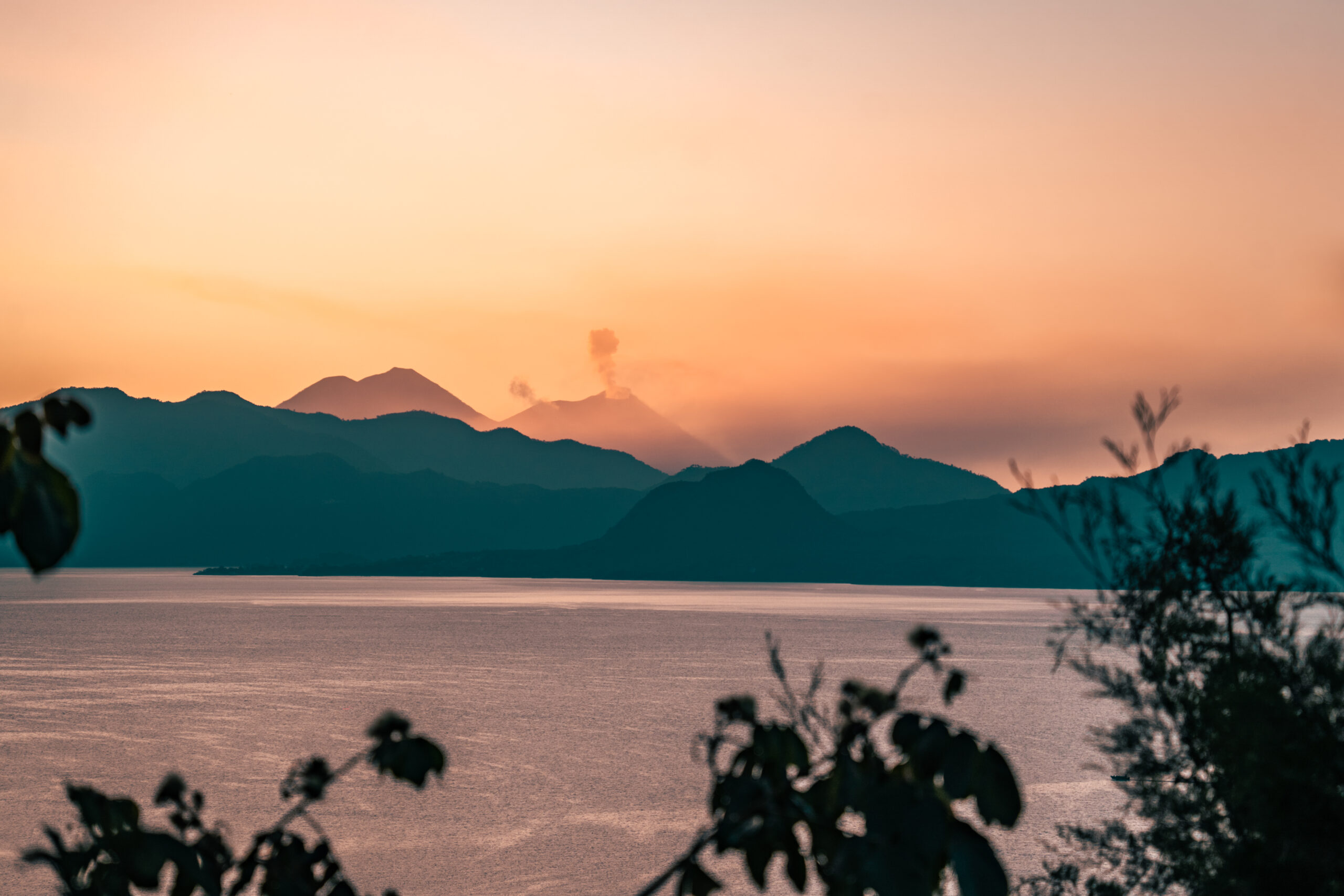Discover the Top 7 Rich Tapestries of Panajachel Cultural Experiences
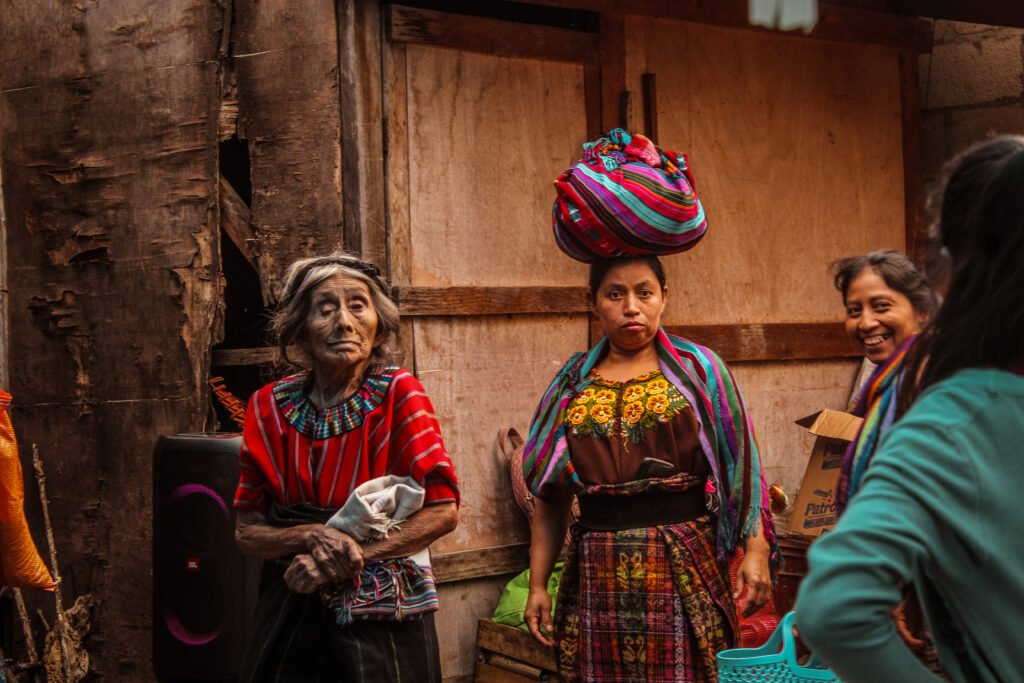
Unveiling Panajachel: A Hub of Indigenous Traditions
Exploring the Weaving Wonders of Local Artisans
In the heart of Guatemala, bordered by the serene Lake Atitlán, lies Panajachel—a town brimming with cultural wealth and artistic mastery. The art of weaving, practiced for generations, remains a vibrant thread in the fabric of the local community. The artisans of Panajachel harness traditional techniques, passing them from elder to youth, ensuring that each pattern retains the stories and symbolism of indigenous heritage. By visiting local markets and collaborative workshops, one gains insight into the complex language of textiles, each color and motif narrating tales of ancestral wisdom and the natural world.
The Vibrant Festivals: A Feast for the Senses
Panajachel’s calendar is dotted with festivities that ignite the senses and transform the town into a kaleidoscope of color and sound. Celebrations that pay homage to patron saints burst with the energy of marimba music and dance, while processions exhibit the fusion of Mayan beliefs and Christian customs. These festivals not only provide a window into the spiritual life of the community but also showcase the unity and resilience that have allowed Panajachel’s traditions to flourish amidst modern influences.
Culinary Delights: Savoring Panajachel’s Authentic Flavors
From Market to Meal: A Gastronomic Journey
The cuisine of Panajachel is a testament to the harmonious relationship between the people and their verdant environment. A stroll through the bustling markets presents a cornucopia of fresh produce—avocados, corn, beans, and chilies—that form the backbone of the region’s gastronomy. The cooking techniques, humble yet flavorful, give rise to dishes that embody the essence of Panajachel. A visit to a local kitchen offers a coaching in the alchemy of transforming simple ingredients into culinary masterpieces.
Cacao Ceremonies: An Ancient Ritual Revisited
Rooted deeply in Mayan tradition, cacao ceremonies represent much more than the mere act of indulgence; they stand as spiritual gatherings that honor the sacred cacao plant. In Panajachel cultural experiences, this ritualistic consumption of cacao is a gateway to the ancestral wisdom of the Maya civilization—a wisdom that touts the importance of balance and connectivity with all living things. The cacao ceremony continues to be a poignant experience for locals and visitors alike, providing a moment of reflection and unity.
Language and Literature: Understanding Panajachel’s Storytelling Heritage
Spanish and Tz’utujil: Twin Pillars of Panajachel’s Linguistic Identity
Panajachel’s linguistic landscape is dominated by two languages—Spanish and Tz’utujil—that coexist, symbolizing the confluence of cultures within this lakeside community. While Spanish serves as a bridge to the wider world, Tz’utujil encapsulates the soul of Panajachel, carrying the cadences and worldview of its people. A committed effort to preserve this indigenous language speaks to an overarching commitment to maintaining a strong cultural identity.
Local Legends and Folktales: The Oral Chronicles
The rich storytelling tradition of Panajachel cultural experiences is carried forward through the artful weaving of words in local legends and folktales. These stories, passed down through generations by word of mouth, encompass the ethos of the community—values like respect for nature, courage, and wisdom. Delving into these oral chronicles offers a profound understanding of how past events and cultural perspectives continue to shape the social fabric of Panajachel today.
Contemporary Culture: How Panajachel Melds the Old with the New
Contemporary culture in Panajachel reveals a community where the echoes of antiquity are seamlessly interwoven with the pulse of modern life. The citizens of this vibrant town find a balance between honoring their profound traditions and embracing the opportunities that come with modern advancements. Educational initiatives, technological breakthroughs, and global connectivity have all found a place in the daily lives of Panajachel’s residents. Yet, the reverence for time-honored practices and centuries-old beliefs creates a unique cultural ecosystem that is rarely found elsewhere. It is this ability to look forward while remembering the past that gives Panajachel cultural experiences its distinctive edge as a hub of living heritage.
Art and Music of Panajachel: Windows into the Soul of a Community
The art and music scene in Panajachel cultural experiences provides profound insights into the communal psyche and reflects a wide spectrum of emotional and cultural expressions. Galleries offer a gateway into understanding the historical and contemporary narratives that shape the community’s identity through works of art that are vibrant, evocative, and deeply rooted in indigenous traditions. Meanwhile, the music scene, echoing the enduring pulse of Lake Atitlán, showcases both ancestral rhythms and innovative musical experiments. Through these rich mediums, both locals and visitors can connect with the essence of Panajachel, gaining a deeper appreciation for the shared human experience that defines life by the lake.
Gallery Hopping: A Visual Encounter with Indigenous Art
Art enthusiasts in Panajachel cultural experiences are treated to a visual exploration of indigenous narratives through countless galleries dotting the town. Each gallery visit becomes an intimate encounter with the cultural heartbeat of the community—the struggles, celebrations, and enduring spirit of the people are captured in the vivid palettes of local artists. The artwork, ranging from textiles to paintings and sculptures, functions as both a preservation of cultural memory and a canvas for innovation.
Melodies by Lake Atitlán: A Musical Exploration
The gentle lap of the lake’s waters against the shore sets the rhythm for Panajachel’s musical expression. Through a diverse soundscape that extends from the traditional tunes of the marimba to the modern blends of styles, music here is a universal language uniting individuals across different walks of life. Both impromptu street performances and organized concerts offer insights into the community’s soul, a vibrant melody that sings of resilience, joy, and a deep connection to the enchanting landscape.
Spirituality and Ancestral Wisdom in Panajachel
Sacred Sites and Ceremonies: The Essence of Maya Spirituality
The spiritual practices of Panajachel cultural experiences are deeply ingrained in the daily life of its residents. From the tranquil hills serving as sacred sites to the ceremonial centers scattered across the town, one witnesses a profound reverence for Maya spirituality. Ceremonies are not mere rituals; they are the bridges to ancestral wisdom, conducted with a deep understanding of cosmic forces and a symbiotic relationship with nature.
Reverence for Nature: The Pivotal Role of the Volcanoes and Lake
The towering volcanoes and pristine Lake Atitlán play more than a geographical role in Panajachel; they are fundamental to the spirituality and ancestral wisdom that permeate the community. These natural landmarks are not only revered for their sublime beauty but also for their significance in Maya cosmology and the sustenance they provide for life. Their presence is a constant reminder of the inextricable bond between humanity and the environment—a bond that is celebrated and honored in every aspect of life in Panajachel cultural experiences.
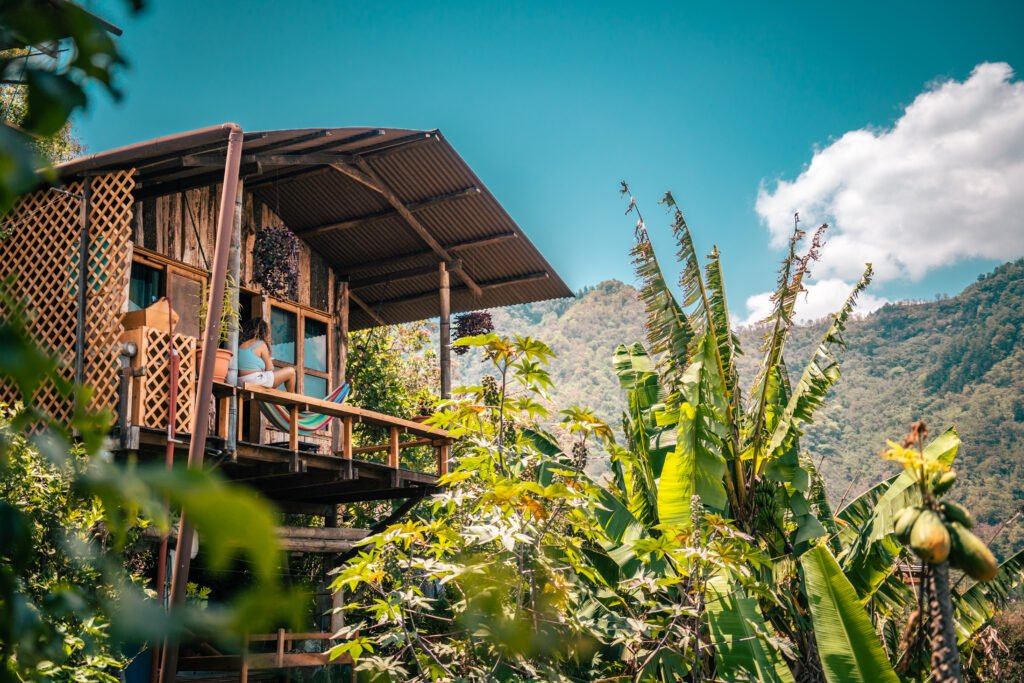
Architecture and Habitat: The Storied Structures of Panajachel
Colonial Imprints and Indigenous Design: A Study in Contrasts
Panajachel cultural experiences and architectural landscape narrates a history of colonial influence meshed with the resilience of indigenous design. Buildings in the town display a blend of styles that highlight the complex interplay between foreign and local elements. Admiring the colonial churches’ intricate facades alongside the modest yet distinctive indigenous homes, one grasps the visual narrative of a past marked by conquests and the enduring strength of a community determined to preserve its own architectural identity.
Eco-Friendly Living: Sustainable Practices among the Lakeside Community
Driven by their deep connection to the land, residents of Panajachel are pioneers in implementing sustainable living practices that safeguard their environment. Eco-friendly initiatives are evident in the design of buildings that incorporate natural materials and harness renewable resources. This conscious approach to habitat construction and maintenance reflects a broader commitment to ecological stewardship and harmonious living alongside the bountiful natural wonders that frame Panajachel cultural experiences.
FAQ: Questions and Answers of Panajachel cultural experiences
What culture can you experience and see clearly around Lake Atitlan?
Around Lake Atitlan, you can immerse yourself in the rich and vibrant Maya culture. There are a dozen or so Mayan villages surrounding the lake, each with its own unique customs, traditions, and attire. Locals wear traditional clothing with patterns and colors specific to their village. The Mayan people here speak various dialects of the Mayan language, with Spanish being secondary. Visitors can experience traditional markets bursting with hand-woven textiles, ceramics, and beaded jewelry. Many communities also maintain their ancestral agricultural practices and hold sacred ceremonies that visitors may observe, providing insight into the spirituality and communal ties that have been pivotal to survival and identity over centuries.
What is Panajachel Guatemala known for?
Panajachel, often affectionately called Pana, is known as the gateway to Lake Atitlan and its surrounding villages. The town is famous for Calle Santander, a bustling street lined with a plethora of shops, restaurants, and street vendors selling a wide array of Guatemalan handicrafts, textiles, and souvenirs. Panajachel offers a vibrant nightlife and serves as a hub for tourists seeking kayaking, hiking, and paragliding adventures around the lake. Its breath-taking views of the lake and volcanoes, as well as its accessibility to various transportation options, have made Panajachel a must-visit location for those exploring the Guatemala Highlands. You will see there are many Panajachel cultural expereinces when you visit.
What is unique about Lake Atitlan?
Lake Atitlan is renowned for its extraordinary beauty and its unique geological setting. It’s a volcanic lake, formed approximately 1.8 million years ago, and is the deepest in Central America, reaching depths of over 300 meters (about 1,000 feet). The lake is framed by three imposing volcanoes: Atitlan, Toliman, and San Pedro, which add to the dramatic landscape. Another unique feature is its endorheic basin, meaning that the lake doesn’t drain to the sea but is fed by rainwater and streams. Over the years, Lake Atitlan has inspired artists, writers, and travelers alike with its enchanting views, clear waters, and the mosaic of indigenous cultures that encircle its shores.
What do Guatemalans like to do?
How do the locals sustain their economy around Lake Atitlan?
The local economy around Lake Atitlan is sustained through a variety of means. The most prominent industries include agriculture, tourism, and artisanal crafts. Coffee and avocado plantations are abundant, and small-scale farming of maize and vegetables also contributes to the sustenance of the local population. Handcrafted textiles, beading, and pottery are significant for income, particularly for women. The influx of tourists has propelled the service sector, with many locals working in hotels, restaurants, and as tour guides. Environmental sustainability is also becoming increasingly important, and initiatives for eco-tourism generate revenue while promoting the conservation of the lake’s unique ecosystems.
What are the main events and festivals celebrated at Lake Atitlan?
Lake Atitlan hosts a number of vibrant events and festivals throughout the year that showcase its rich cultural tapestry. Celebrations like Semana Santa (Holy Week) feature processions, colorful ‘alfombras’ (carpets) made from dyed sawdust and flowers, and various religious ceremonies. Traditional Mayan festivities such as the ‘Cofradia’ rituals are held, with communities staging dances, marimba performances, and fireworks. Towns around the lake also hold their own ‘Fiesta Patronal’ with parades, music, and often a fair. Additionally, the ‘Toritos’ dance in November and the ‘Feria de Santiago’ in July are significant events, marked by locals dressing in traditional attire, communal feasts, and a display of local customs.
What are the transportation options for traveling to and around Lake Atitlan?
Transportation options to and around Lake Atitlan include public and private choices. Visitors often arrive at Panajachel via shuttle vans or chicken buses from major Guatemalan cities such as Guatemala City or Antigua. Boat taxis, commonly known as ‘lanchas’, are the primary means of traveling among the lake’s villages, offering convenient and scenic rides across the water. Tuk-tuks operate within the towns for short-distance travels on land. For a more private experience, car rentals and private shuttles are available but can be more expensive. For the adventurous, biking around the lake offers an intimate way to appreciate the area’s natural beauty.
Are there sustainable tourism practices implemented in Lake Atitlan area?
Yes, sustainable tourism practices are an emergent focus in the Lake Atitlan area. Local businesses and international NGOs have been working towards maintaining an eco-friendly environment while supporting tourism. Practices include promoting the use of water treatment plants to protect the lake’s water quality, encouraging visitors to support local artisans and producers, establishing community-based tourism that directly benefits the local population, and educating tourists on the importance of respecting cultural traditions and natural resources. Some hotels and tour operators have also initiated sustainable practices like solar-heated water, organic gardening, and waste reduction programs to lower the environmental impact of tourism.
Summary of Panajachel cultural experiences
In this immersive journey through Panajachel’s rich cultural landscape, we have unveiled the vibrant tapestry that makes up the heart and soul of this Guatemalan gem. From the intricate weavings of local artisans and the explosive color and joy of its festivals to the mouthwatering authenticity of its culinary offerings and the sacred cacao ceremonies, Panajachel is a place where tradition thrives.
We’ve delved into the community’s dual linguistic heritage, exploring how the Spanish and Tz’utujil languages preserve and tell the tales of this land through time-honored legends and folklore. The seamless fusion of contemporary influences with age-old customs speaks to the adaptive spirit of Panajachel, while its art and music scene offers a window to the community’s soul.
Spirituality in Panajachel is deeply entwined with reverence for the majestic volcanoes and serene Lake Atitlán, reminding us of the wisdom passed down through generations. Even the architecture tells a story of cultural syncretism and ecological awareness, where the past is built into the very structures of today.
As we conclude our exploration of Panajachel, it’s clear that each aspect we’ve discovered—whether it be creative, culinary, spiritual, or ecological—is a thread in the larger tapestry of this town’s enduring heritage. Panajachel invites visitors and residents alike to experience, learn, and become part of its ever-evolving story.
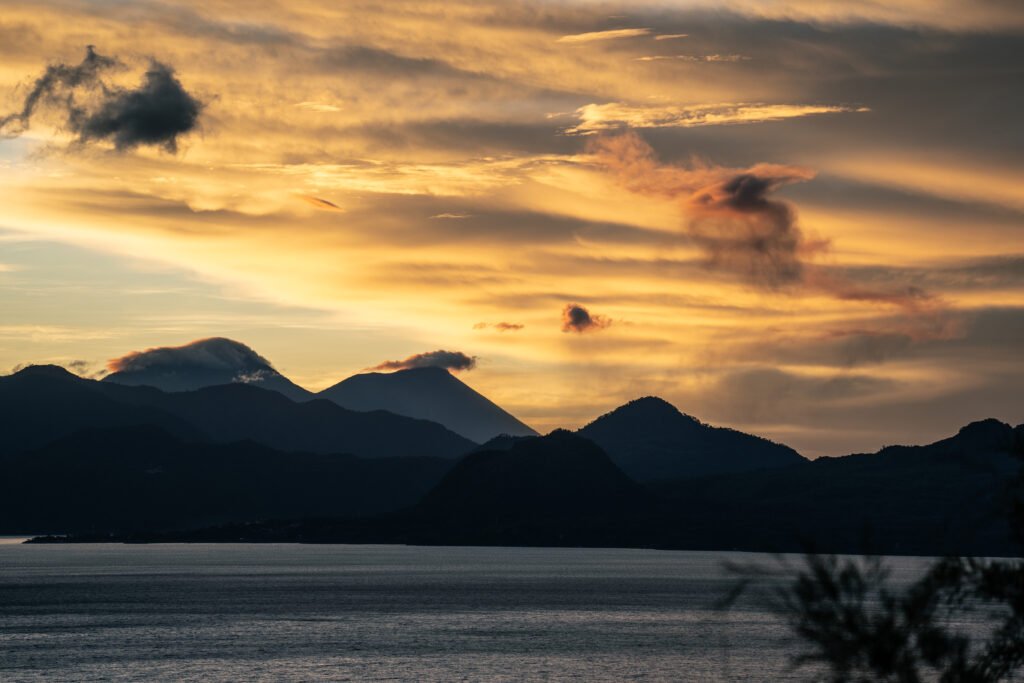
Don’t know where to stay? At Eagles Nest we offer all inclusive rooms. Enjoy the included yoga classes, delicious traditional food, and breathtaking views. We also host yoga retreats, make sure to attend during your stay. Book here.

